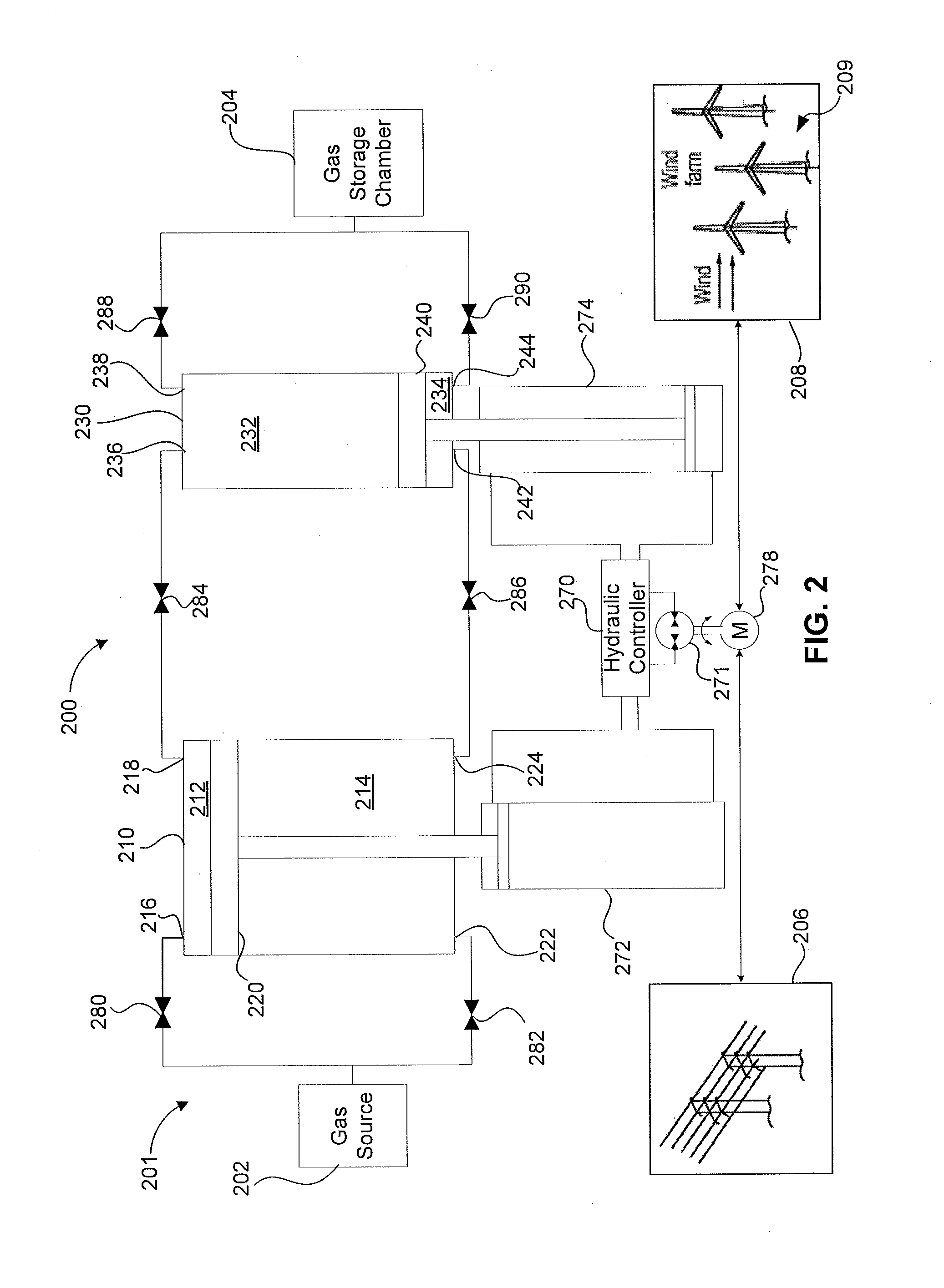Systems and methods for optimizing thermal efficiencey of a compressed air energy storage system
- Summary
- Abstract
- Description
- Claims
- Application Information
AI Technical Summary
Benefits of technology
Problems solved by technology
Method used
Image
Examples
Embodiment Construction
[0017]Systems, devices and methods for optimizing and efficiency operating a gas compression and / or expansion system are disclosed herein. The gas compression and / or expansion systems can include one or more double-acting working pistons movably disposed within a cylinder to compress gas within a working chamber and configured to compress gas when moved in more than one direction. For example, the double-acting piston can be configured to compress gas both when moved in a first direction and when moved in a second direction opposite to the first direction. The gas compression and / or expansion systems can also include one or more double-acting working pistons movably disposed within a cylinder and configured to displace liquid within a working chamber when moved in more than one direction. For example, the double acting piston can be configured to discharge liquid from a first working chamber and draw liquid into a second working chamber when moved in a first direction, and discharge...
PUM
 Login to View More
Login to View More Abstract
Description
Claims
Application Information
 Login to View More
Login to View More - R&D Engineer
- R&D Manager
- IP Professional
- Industry Leading Data Capabilities
- Powerful AI technology
- Patent DNA Extraction
Browse by: Latest US Patents, China's latest patents, Technical Efficacy Thesaurus, Application Domain, Technology Topic, Popular Technical Reports.
© 2024 PatSnap. All rights reserved.Legal|Privacy policy|Modern Slavery Act Transparency Statement|Sitemap|About US| Contact US: help@patsnap.com










